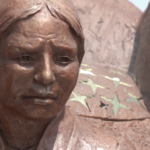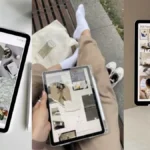
Do cremated ashes classify as human remains? Should there be international trade in religious relics? What, in the words of the fictive archaeologist Indiana Jones, “belongs in a museum”?
These are among the questions being asked by cultural lawyers and other art market observers since Sotheby’s postponed its auction of the so-called Piprahwa gem relics following objections from India last week. The gems — a group of more than 300 jewels, stones and ornaments — were among 1,800 buried in a funerary monument about 240BC-200BC and unearthed near India’s border with Nepal by the British colonial landowner William Claxton Peppé in 1898.
They carry deep significance to Buddhism. According to the Brahmi script on one of the caskets, the gems were buried with some of the cremated remains of Shakyamuni Buddha, the religion’s founder. Their weighty spiritual history is not lost on Chris Peppé, one of three of Claxton Peppé’s descendants who hoped to sell the gems, which were unofficially estimated somewhere between HK$10mn and HK$100mn ($1.3mn-$13mn). “At the age of 12 I began to grasp the significance of these little gems that I was told had been discovered with the bones of the Buddha,” Peppé writes in Sotheby’s online catalogue.
Two days before the planned May 7 morning auction of “The Piprahwa Gems of the Historical Buddha” in Hong Kong, India’s Ministry of Culture sent a legal notice to Sotheby’s calling on it to cease the auction and repatriate the trove to India. The gems, it said, “constitute inalienable religious and cultural heritage of India and the global Buddhist community”.
The letter cites India’s legal frameworks, from its Treasure Trove Act of 1878 to the Antiquities and Art Treasures Act of 1972, as well as calling on UN and international laws and conventions covering areas including cultural property, religious sensitivities, grave goods and human remains.

There is plenty of sympathy for India’s cause, although its legal position might not be as strong as the moral and ethical considerations around the gems. “Their [1878] law doesn’t apply retroactively, so title would have vested to the British Crown, [which governed India and returned part of the find to Peppé’s family],” says Leila Amineddoleh, a partner and cultural heritage expert at the law firm Tarter Krinsky & Drogin. But, she adds: “Now is a really interesting time when it comes to colonial-era returns.”
As Alexander Herman puts it in his 2021 book Restitution: The Return of Cultural Artefacts, “law is one thing, morality quite another”.
Amineddoleh cites the example of the Benin Bronzes, mentioned too in the letter from India’s Ministry of Culture to Sotheby’s, thousands of which were taken by British forces from present-day Nigeria in 1897, a similar time to the gems’ excavation. The bronzes, which carried ceremonial and religious significance to the Kingdom of Benin, are now, the ministry writes, “a focal point in global restitution effort[s]”.
Amineddoleh notes though that the circumstances around the Piprahwa gems are different. “When it comes to Benin, there was indiscriminate violence. It is a bit harder when it comes to just taking property,” she says, although believes India has “persuasive arguments” at its disposal.
Meanwhile, relics from a range of religions often appear on the market, although officially forbidden by the laws governing the Catholic Church. The lawyer Peter Tompa, previously co-chair of the American Bar Association’s Art & Cultural Heritage Law Committee, says that “if holy relics are now to be returned, I would think the Catholic Church would have a wonderful claim to many reliquaries and sacred objects displayed in museums like the Met [New York’s Metropolitan Museum]”.
Such objects don’t always involve human remains although these are associated with the holiest of relics, including skulls apparently from martyrs or objects said to contain the bones of saints. The facts might be questionable, but these spark additional ethical debates. In the UK, for example, museums can legally show human remains and their trade is permitted, for those that are more than 100 years old. But in 2020, Oxford’s Pitt Rivers Museum responded to public pressure and removed from display its Shuar Tsantsas, or shrunken heads, of people killed in Ecuador, said to hold deep spiritual meaning to descendants of Jivaroan peoples.

Amineddoleh and others question India’s “human remains” claim in the case of the Piprahwa gems. “I don’t think that dust or ashes are protected as ‘human remains’ under any law,” she says. Ivan Macquisten, a market analyst and adviser to trade associations, says while he is “personally against any trade in human body parts or human relics,” in the Piprahwa case, “it is not clear to me whether any [human remains] are involved, or whether any clear evidence exists to support the claim that the gems were mixed with the ashes of the Buddha. How can anyone know?”
Macquisten also identifies “a general hand wringing argument from those who want to use what is little more than moral blackmail to get their way”. He finds that “this sort of attitude and behaviour is far too common these days and is exacerbated by international relations using cultural property as a soft power diplomacy tool.” He cites the “much overlooked” 1970 Convention on illicit trade in cultural property as the benchmark for “balancing conflicting interests between nations and individuals with valid rights”.
Others note that the rest of the gems from the 1898 find are in fact in a museum — donated to what is now the Indian Museum in Kolkata. Amineddoleh reminds too that auction houses are not governed by the same standards as museums. “They are not non-profit organisations and have a legal, fiduciary duty to get the best price for their consignors,” she says.
Sometimes though, Macquisten says, adverse publicity can trump all legal, ethical and moral debates. “It might not be good business to go ahead,” he summarises. Sarah Barker, a partner and head of the art law practice at Withers, says of the Piprahwa gems sale that: “I would expect that the parties involved would all be incentivised to find a resolution without having to resort to a difficult and complex legal process.”
The nature of such a resolution remains to be seen. Amineddoleh wonders if “maybe someone from India could step up and buy them, maybe transfer them to a museum or Buddhist organisation or begin some form of repatriation.” Sotheby’s says that it and the government of India are “in discussions” and “are pleased to be working together to find the best possible outcome for all parties.” Indiana Jones will hopefully approve.
Find out about our latest stories first — follow FT Weekend on Instagram, Bluesky and X, and sign up to receive the FT Weekend newsletter every Saturday morning









